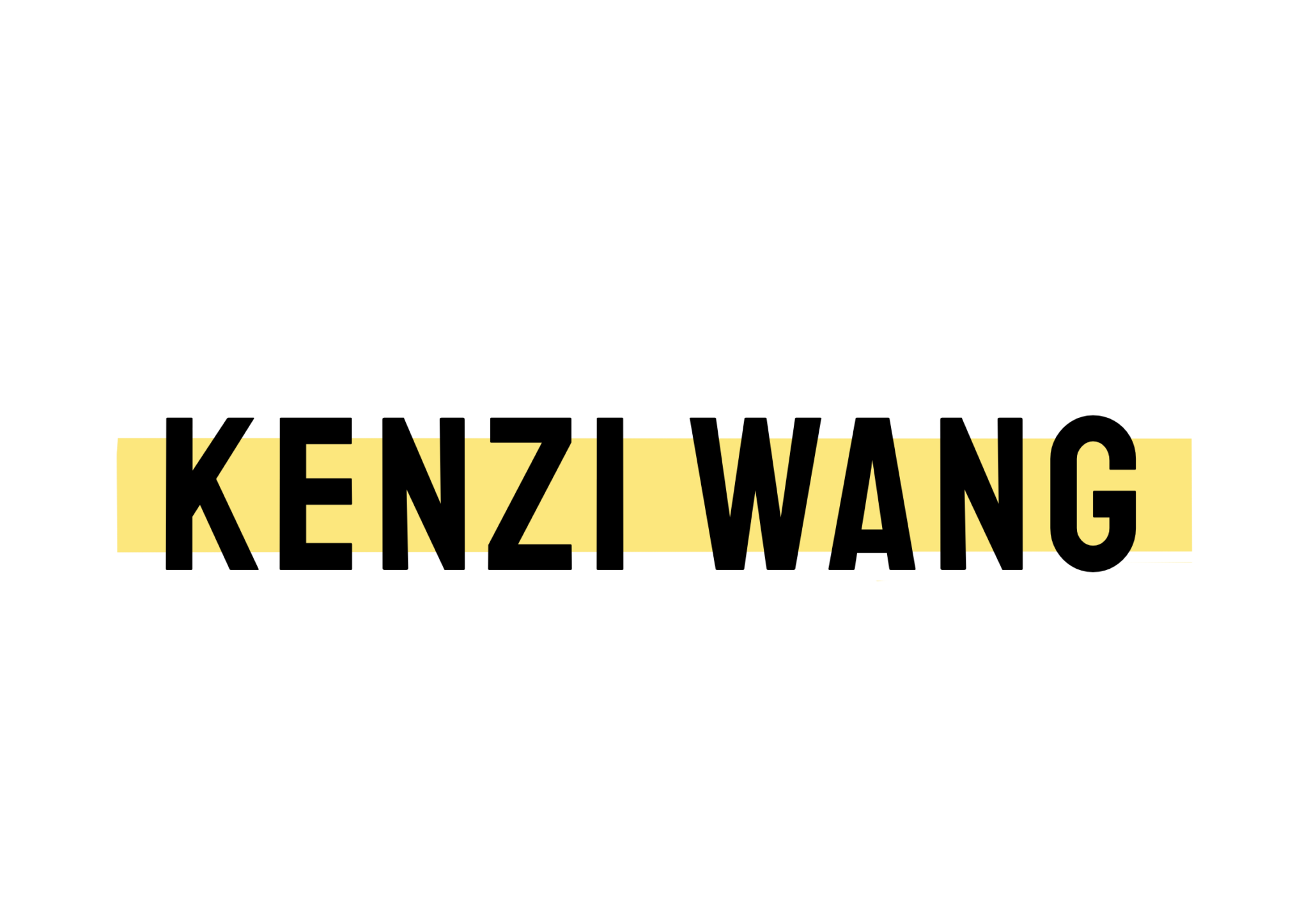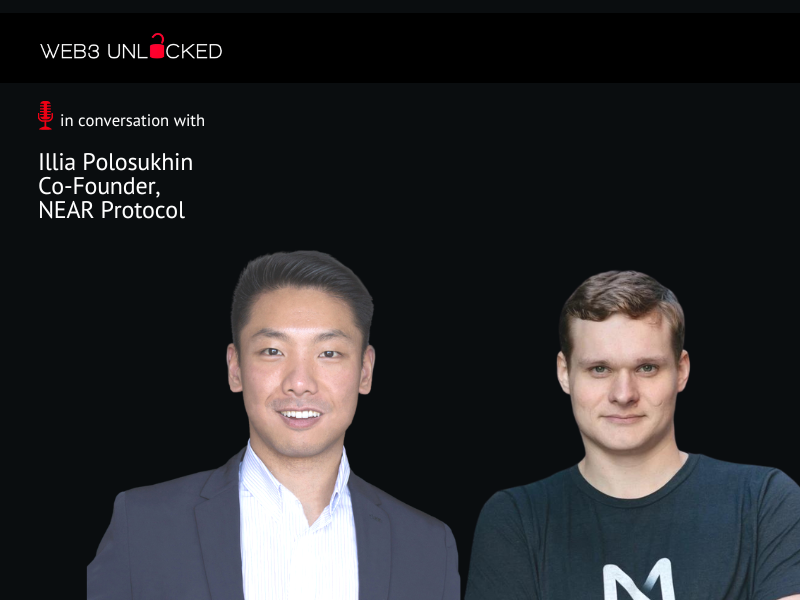Before Web3, Illia Polosukhin, Co-Founder of NEAR Protocol, worked on another exciting technology that is making huge waves now – Artificial intelligence (AI).
After leaving Google in 2017, he co-founded NEAR AI, intended to be what GitHub Copilot is now, to create coding tools for regular people. NEAR AI had students worldwide creating datasets for models; the company’s biggest challenge was figuring out a unified payment system for them.
That’s when Illia and his coworkers turned to blockchain in 2018. However, blockchain transaction fees were higher than individual payments at the time. Looking around the protocols available, Illia’s team realized that no protocol tried to solve the problem blockchain had then, which was true scalability. In this, NEAR saw an opportunity to build a blockchain and subsequently build applications on top of it.
In the recent episode of Web3 Unlocked, he discusses NEAR’s creation, what it takes to have true scalability in Web3, and building through a bear market.
Disclaimer: The views expressed in Web3 Unlocked podcast are those of our guests solely, and none of this is financial advice.
What differentiates NEAR as an L1
What makes NEAR Protocol stand out is that, unlike other protocols which regular people cannot use, NEAR is human-readable.
“We don’t actually talk about keys; we talk about how you can access your account and which applications can use that account.”
What this does, Illia says, is make users’ accounts transferable, making it easy for users to recover with multiple keys on different devices with different access patterns.
Another aspect that makes NEAR Protocol different is that they chose to use WebAssembly as the main VM for smart contracts. This allows developers to program with any programming language. The VM is also highly optimized to run in any browser. Additionally, users can also simulate other blockchains on NEAR. Illia’s team is also working on launching more tools to make NEAR easy to use. For example, they have ways to aggregate data from the blockchain such that front ends become easier to build. NEAR is also planning to launch Discovery, allowing users to build decentralized front ends that are “unstoppable and uncensorable.”
Illia admits there needs to be a lot of work done regarding security and scalability in blockchains. NEAR is focused on sharding and parallelizing running blocks under the hood, where each block is executed in parallel on different machines. This would allow the blockchain to grow with demand and, conversely, shrink as well when the demand reduces.
NEAR Protocol is currently running four shards that have “dynamic resizing,” where a user can take a specific contract and assign it to its own shard.
“Think of it like Amazon Web Services,” Illia says, where users can come and ask for new servers without wondering what goes on behind the scenes.
Ecosystem development strategy. What is it?
NEAR is working on something Illia says is the “blockchain operating system.” It is a common layer to browse on-chain experiences and is compatible with any blockchain. This allows users to navigate and find applications, use cases independently, and use them as any wallet they want.
“It’s everything from onboarding that we’ve been innovating on. We’ve been doing a lot of multi-chain, kind of cross-chain style to tie it all together… If we’re talking about going forward, the idea here is to really offer developers the best experience to build on Web3 and on any chain you want.”
Illia says developers can also combine multiple blockchain applications into one experience and one front end. All of this is served in a decentralized manner so users can navigate between them.
On Differences Between Web2 and Web3
Illia believes that a strong core team is needed to execute an idea, whether it is in the Web2 or the Web3 space. However, in the case of Web3, “you need to start bringing other people and community early on.”
In Web3, the builders are engaged as an ecosystem with the community; everything is open source. He also refers to token economics as Web3’s “jet fuel.”
“You have this jet fuel; you can use it once. You just need to know when you will use it.”
On what enables Web3 founders to be successful
“I think at the core, it’s kind of this openness to work with other people and the ecosystem. On the other hand, you need to have some level of humility and vision.”
Illia says it’s balancing the decision to tell your team exactly what to work on as well as working with the community. One of the things NEAR’s team did early on was talk to about 300 Web3 companies. They realized that many of them faced onboarding troubles where there was a significant drop once people logged in on the websites. This helped them figure out the challenges and build the protocol around them.
Biggest Learning as a Web3 Founder
Illia’s team started work on NEAR Protocol in 2018. After talking to other Web3 folks, they realized that building a sharded blockchain would not be as easy as they thought.
They ended up building the blockchain in 2019, though they had their first smart contract on test net in December 2018. By April 2019, they had a working blockchain, but Illia was reluctant to launch it because it wasn’t what they promised.
In hindsight, Illia realized that if the launch had happened, then, people would have had a working web assembly environment to start building smart contracts to onboard users in 2019.
“I think the lesson there is really just launch, even if it’s not like fully your vision yet because you will need to upgrade.”
How NEAR deploys its funding
What NEAR does is deploy funds through investing in eco funds. Direct investment is made in partnerships to attract core applications and bring in more users.
NEAR also allocates grants which are transitioning into a more open model where the funding goes through the ecosystem. Now, the treasury is allocated by the DAO and then allocate to specific initiatives until they build out this transition.
On the biggest pain point of decentralizing NEAR
“I think the painful thing, which is true about most of the decentralized governance, is participation because the people you want to participate are usually the busiest ones. The ones who are actively doing the work are the ones you want to participate because they have the most knowledge and the most interest in this ecosystem.”
On what the bear market taught Illia as a founder
“Coming from a bear market is great. It worked us off all the noise and really focuses [us] on what’s most important.”
Illia says that through the bear market, NEAR’s team gets less noise with more focus, having people who continue building because they are true builders.
On the intersection of AI and Blockchain
Illia believes that the recent developments in AI will change the way people interact with computing. He says that ChatGPT4 has created a layer of language between computers that has “common sense,” and that will change the computing paradigm.
However, he also cautions that AI models can become extremely efficient at creating fake things like lawsuits, financial statements, misleading articles, and more.
“This is where Web3 comes in. We need to do authentication fast for every single thing. Books, content, articles, all of this needs to have a provenance, because otherwise, we are going to be in a world where all this content is created and manufactured based on whatever.”
Illia believes this is a big opportunity for Web3 as there will be a need for a layer of identity and authentication.
Illia also mentions NEAR Crowd, built by one of their community members which is a crowdsourcing system that collects interesting data.
“That’s a really good example of how blockchain can be a really powerful marketplace for data models and other stuff for AI.”
Here is a list of the selected time stamps on the different topics discussed during the podcast:
0:25 to 2:01: What inspires Illia to work in Web3
2:02 to 6:29: How Illia started NEAR protocol
7:45 to 16:56: On what differentiates NEAR from other L1s
16:57 to 22:05: On NEAR’s ecosystem development strategy
22:06 to 24:31: On similarities and differences between Web2 and Web3 companies
24:32 to 26:14: On what helps Web3 founders be successful
26:15 to 28:30: On NEAR use cases
28:31 to 32:04: On Illia’s biggest learning in Web3
34:02 to 36:36: On how NEAR deploys its funding
36:37 to 39:19: On the biggest pain point in decentralizing NEAR
39:20 to 43:05: On what the bear market taught Illia as a founder
43:39 to 45:23: On the importance of community building for a protocol
47:01 to 50:36: On the intersection between blockchain and AI



